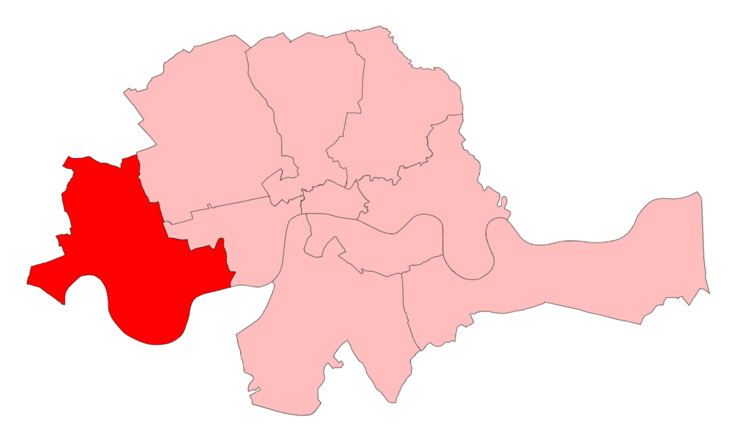 | ||
Number of members Two (1868–1885):One (1885–1997) | ||
Chelsea was a borough constituency, represented in the House of Commons of the Parliament of the United Kingdom.
Contents
- Boundaries and boundary changes
- Elections in the 1990s
- Elections in the 1980s
- Elections in the 1970s
- Elections in the 1940s
- Elections in the 1910s
- Elections in the 1880s
- References
The constituency was created by the Reform Act 1867 for the 1868 general election, when it returned two Members of Parliament (MPs), elected by the bloc vote system of election.
Under the Redistribution of Seats Act 1885, with effect from the 1885 general election, its representation was reduced to one MP, elected by the first past the post system.
Boundaries and boundary changes
Chelsea (after the local government changes in 1965) is a district of Inner London, comprising for administrative purposes the southern part of the Royal Borough of Kensington and Chelsea. Its southern boundary is on the north bank of the River Thames. It adjoins Westminster to the east, Fulham to the west and Kensington to the north.
Before 1868 the area was represented in Parliament as part of the county constituency of Middlesex.
With the expansion westwards of the urban area around Westminster, the former village of Chelsea and neighbouring areas had by 1868 developed enough to be made a Parliamentary borough and given two seats in the House of Commons. The parliamentary borough comprised four civil parishes: Chelsea, Fulham, Hammersmith and Kensington.
In 1885, the existing parliamentary borough was divided into five single-member constituencies. The Redistribution of Seats Act 1885 defined the redrawn Chelsea seat as comprising the parish of St Luke, Chelsea. The constituency had a detached outlier, the Kensal Green area. (The remaining parishes became the constituencies of Fulham, Hammersmith, Kensington North and Kensington South.)
In 1889, the historic county of Middlesex was divided for administrative purposes. Chelsea became part of the County of London. No changes were made to parliamentary boundaries, however.
In the 1918 redistribution of Parliamentary seats, the Metropolitan Borough of Chelsea (created as a local government unit in 1900) was represented by one MP.
In the redistribution which took effect in 1950, the then Brompton ward of the Metropolitan Borough of Kensington was added to the existing area of the constituency.
In 1965, the London County Council area was absorbed by the new Greater London Council. The constituency was included in a new London Borough of Kensington and Chelsea, although the Parliamentary boundaries were not altered immediately.
In the redistribution that took effect in 1974, the Kensington and Chelsea, Chelsea constituency consisted of the then Brompton, Cheyne, Church, Earls Court, Hans Town, North Stanley, Redcliffe, Royal Hospital and South Stanley wards of Kensington and Chelsea.
From the 1983 redistribution, Chelsea consisted of Abingdon, Brompton, Cheyne, Church, Courtfield, Earls Court, Hans Town, North Stanley, Redcliffe, Royal Hospital and South Stanley wards of Kensington and Chelsea.
98.5% of the constituency had been in the pre-1983 Chelsea and 1.5% had been part of Kensington.
In the 1997 redistribution, Chelsea ceased to exist as a constituency. The area was included in the Kensington and Chelsea constituency, which covered the central and southern portions of the Royal Borough of Kensington and Chelsea, including the centres of both Kensington and Chelsea.
